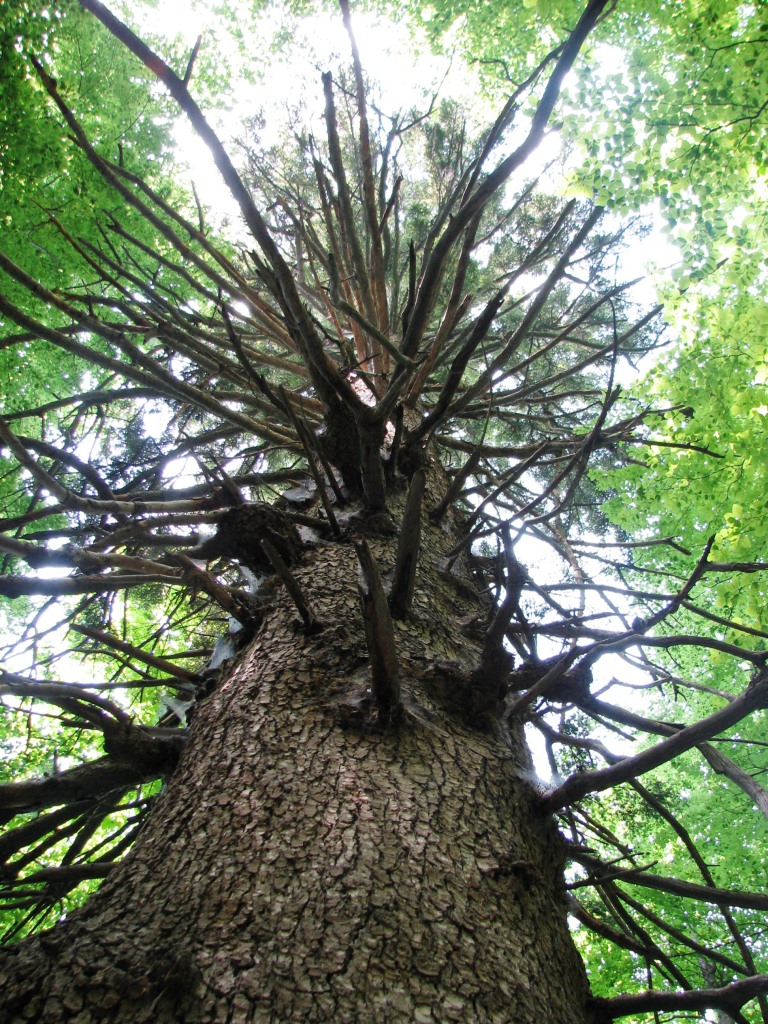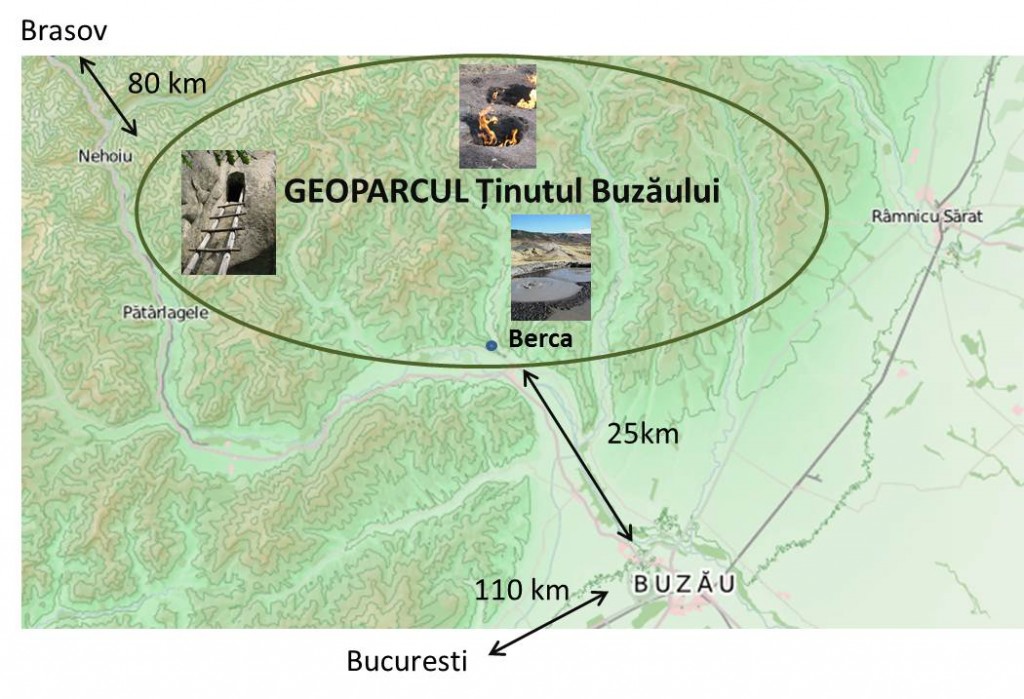Buzau Geopark targets UNESCO membership and transforming region into top ecotourism spot in Romania



 ”A landscape that could only be dreamed up by the Brothers Grimm.” That's how a British journalist with The Guardian described the Buzau region after a week bicycle touring through the Buzau Mountains. Of the few visitors to the area, most share the same impression and are surprised by the spectacular sights hidden just 130 km from Bucharest. But Buzau is largely unknown to the wider public due to an absence of infrastructure and a lack of tourism promotion. An ambitious project aims to change this in the next five years: The Geopark 'Tinutul Buzaului' strives for UNESCO Geopark membership in order to promote the region at a European and worldwide level.
”A landscape that could only be dreamed up by the Brothers Grimm.” That's how a British journalist with The Guardian described the Buzau region after a week bicycle touring through the Buzau Mountains. Of the few visitors to the area, most share the same impression and are surprised by the spectacular sights hidden just 130 km from Bucharest. But Buzau is largely unknown to the wider public due to an absence of infrastructure and a lack of tourism promotion. An ambitious project aims to change this in the next five years: The Geopark 'Tinutul Buzaului' strives for UNESCO Geopark membership in order to promote the region at a European and worldwide level.
by Thorsten Kirschner
Perhaps nowhere else in Romania can such a diversity of geological treasures be found: unique phenomena in Europe, such as the Mud Volcanoes at Berca or the Living Fires at Lopatari, the Salt Mountains near Manzalesti, the oil springs at Pacuri, or the amber mines at Colti, Romania’s only amber extraction site.
The idea of creating a Geopark in Buzau county was born several years ago, initiated by the Geomedia Centre of the University of Bucharest. A Geopark comprises a certain number of geological sites of particular importance along with archaeological, ecological, historical or cultural sites. The European Geoparks Network was created with the support of the EU and in cooperation with UNESCO in 2000, to preserve the geological heritage and to support sustainable regional development in geopark areas. Since then, 48 Geoparks accross Europe have joined the network.
The future Geopark Tinutul Buzaului, or Land of Buzau, covers a area of more than 100,000 hectares, 18 municipalities and around 50,000 inhabitants. It will be located in the Northwest of Buzau exactly at the crossroads of three historical regions of Romania Transylvania, Moldova and Wallachia (see map below). The Southern entrance point will be 130 km from Bucharest and the Northern entrance point 80 km from Brasov, which will make the park attractive for foreign tourists visiting both Bucharest and Transylvania, or passing from Transylvania to the Danube Delta direct via Buzau valley. Center of the future Geopark will be the village of Berca.
Besides the geological phenomena, the Geopark offers a wide biodiversity and several world-class cultural sites. The triangle created by the Vrancea, Buzau and Covasna counties is one of the wildest regions in both Romania and Europe. An area of more than 3,000 km² without public roads or settlements and with butterflies, bears and wolves as denizens.
From a cultural point of view, the cave churches and settlements of Buzau are no less than the cradle of Christianity on Romanian territory – an archaeological and cultural treasure amidst a breathtaking landscape.
Hiking, biking, adventure, nature & cultural tourism will be the main activities in the future Geopark. The project managers have the ambitious long-term target to transform Buzau into one of Romania's top destinations for ecotourism. A sustainable tourism development strategy should avoid the mistakes made in Prahova valley or Brasov: No concrete bunker guest-houses with screaming colors, no barbecue and french fries mass-tourism. Instead; rural wood cabins, fresh local food from the farmers and hunters and an experience of the natural world that has all but disappeared in Western Europe.
 Modern ecotourism is a little more developed than the back to nature hippy image it conjures on the minds of some . Targeted tourists are middle class and high earners from Germany, Austria, France, UK, as well as Romanians who want to show their children a real natural environment. This does not mean 5-star resorts, but rustic country-inns, good food and attractive tours.
Modern ecotourism is a little more developed than the back to nature hippy image it conjures on the minds of some . Targeted tourists are middle class and high earners from Germany, Austria, France, UK, as well as Romanians who want to show their children a real natural environment. This does not mean 5-star resorts, but rustic country-inns, good food and attractive tours.
The original idea of a Geopark is also to influence its inhabitants’ living conditions. And this is really necessary: Buzau is among the three poorest regions in the European Union. A Geopark is probably the only opportunity for the remote villages to stop emigration and to keep traditions and cultural variety alive.
The Geopark project includes the building of information centers, a Geopark museum, thematic tourism routes and promotional material. Not to forget education, to show the visitors how to preserve the natural heritage.
But there is still a long way to go to official accreditation as part of the European and UNESCO geopark network. Major obstacles remain sustainable financing and the typical political skulduggery. A working group formed by the University of Bucharest, the county council, the involved municipalities, ANTREC Buzau and the tourism development association of Buzau – Monteoru Renaissance, want to boost the project and to win the UNESCO label within the next five years.
The Guardian describes Buzau as a Brothers Grimm "world of myth and tradition”. And in fact, it is one of the very few nature destinations in Europe with such tourism potential. There's hope that Geopark Buzau does not remain a fairy tale.
Further information:
The tourism development association of Buzau, Monteoru Renaissance organizes guided tours in English language to the future Geopark Buzau. More information here. Information about Tinutul Buzaului in Romanian language.
On June 1, 2012 the first Tourism Infopoint Buzau/ Mud Volcanoes in the village of Berca at the entrance of the future Geopark will open. The tourism information center offers flyers, maps and guided tours. More information on Facebook.
Want to become a guest writer on Romania-Insider.com? Email corina@romania-insider.com with your story idea/ideas and your text could be featured on our website!